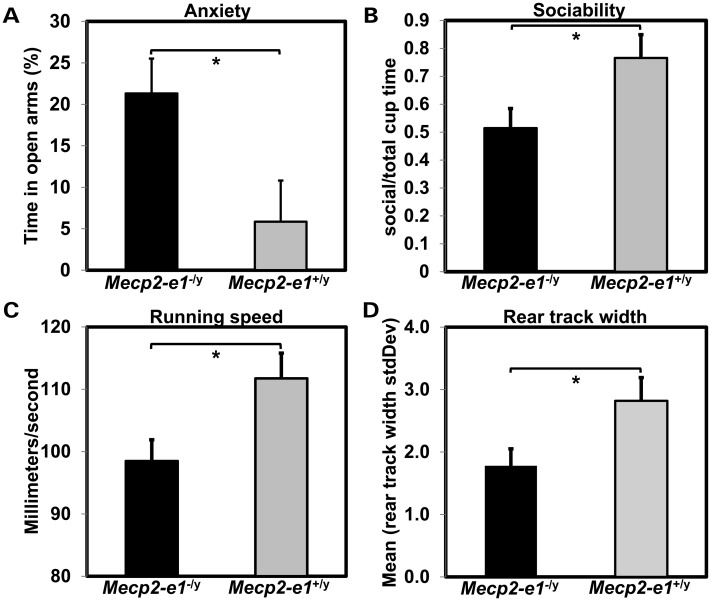Figure 3.
Mecp2-e1−/y mice exhibit behavioral abnormalities. (A). Anxiety measured in the elevated and maze (EPM) showed increased time in the open arms and thus reduced anxiety in Mecp2-e1−/y male mice (P = 0.03*). (B) Sociability measured in the three-chamber assay revealed a significant reduction in the percent time Mecp2-e1−/y mice spent near a cage containing a mouse relative to the total time spent near an occupied or an empty cage (P = 0.048*). (C). TreadScan analysis using a transparent treadmill belt combined with a high-speed video capture to measure instantaneous running speed and foot placement found that Mecp2-e1−/y male mice were significantly slower compared with WT controls (P = 0.03*). (D). TreadScan analysis revealed significantly reduced standard deviation in the rear track width distance between rear foot stance in Mecp2-e1−/y mice compared with WT controls (P = 0.042*). Error bars correspond to SEM. Genotype group comparisons were performed using least squares ANOVA. n = 7 Mecp2-e1−/y male mice, n = 5 WT MeCP2-e1+/y male littermate controls.

